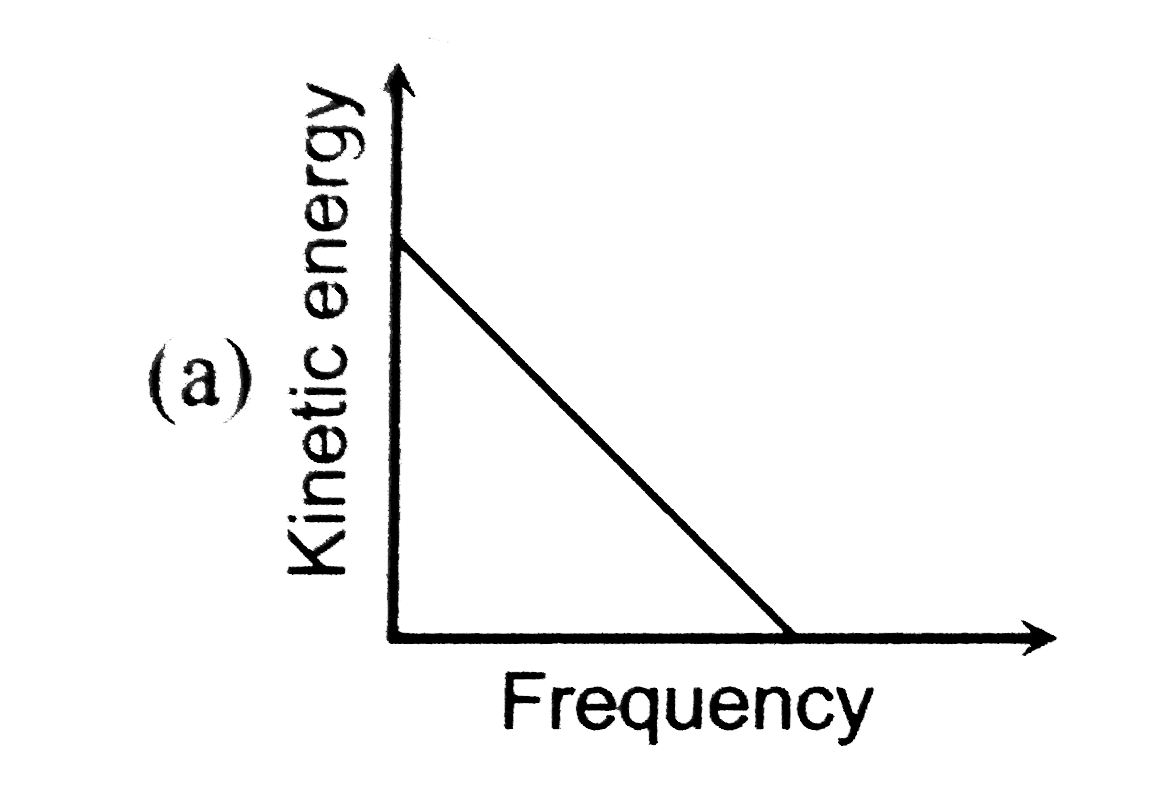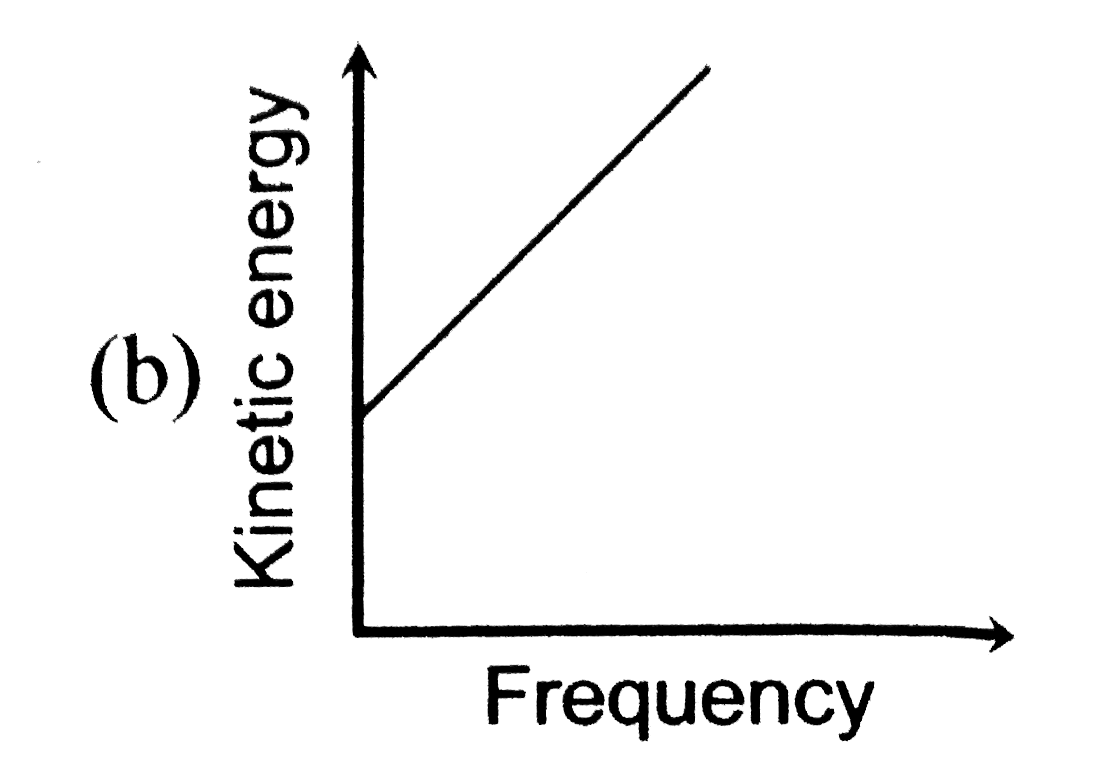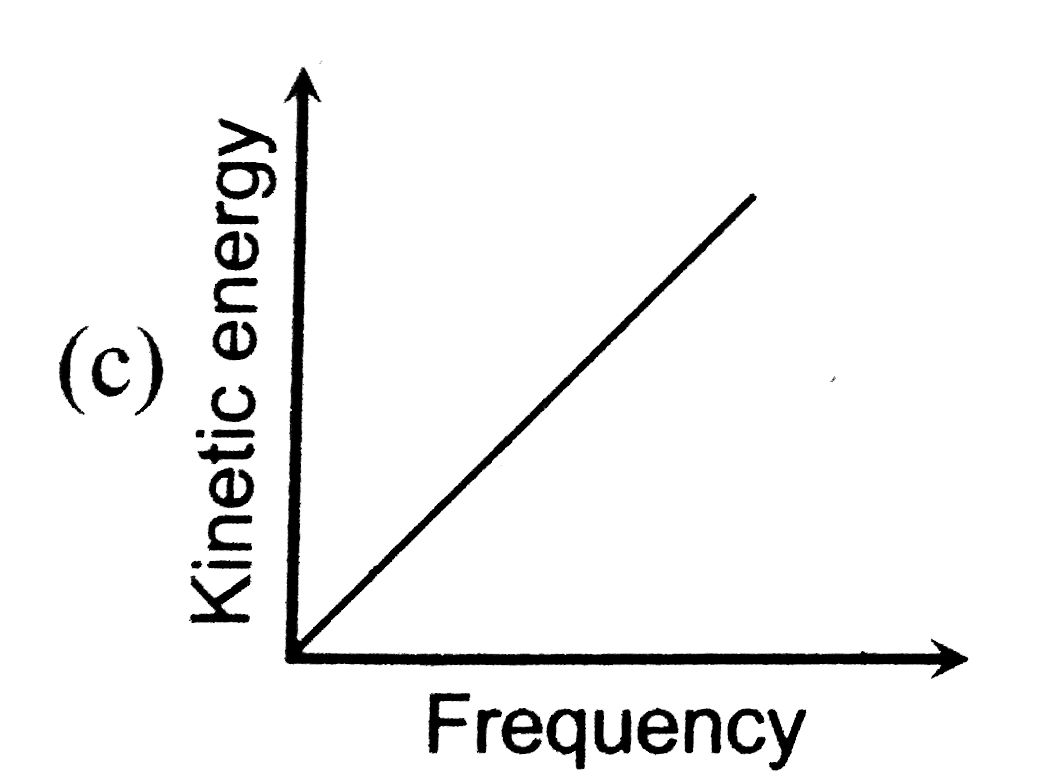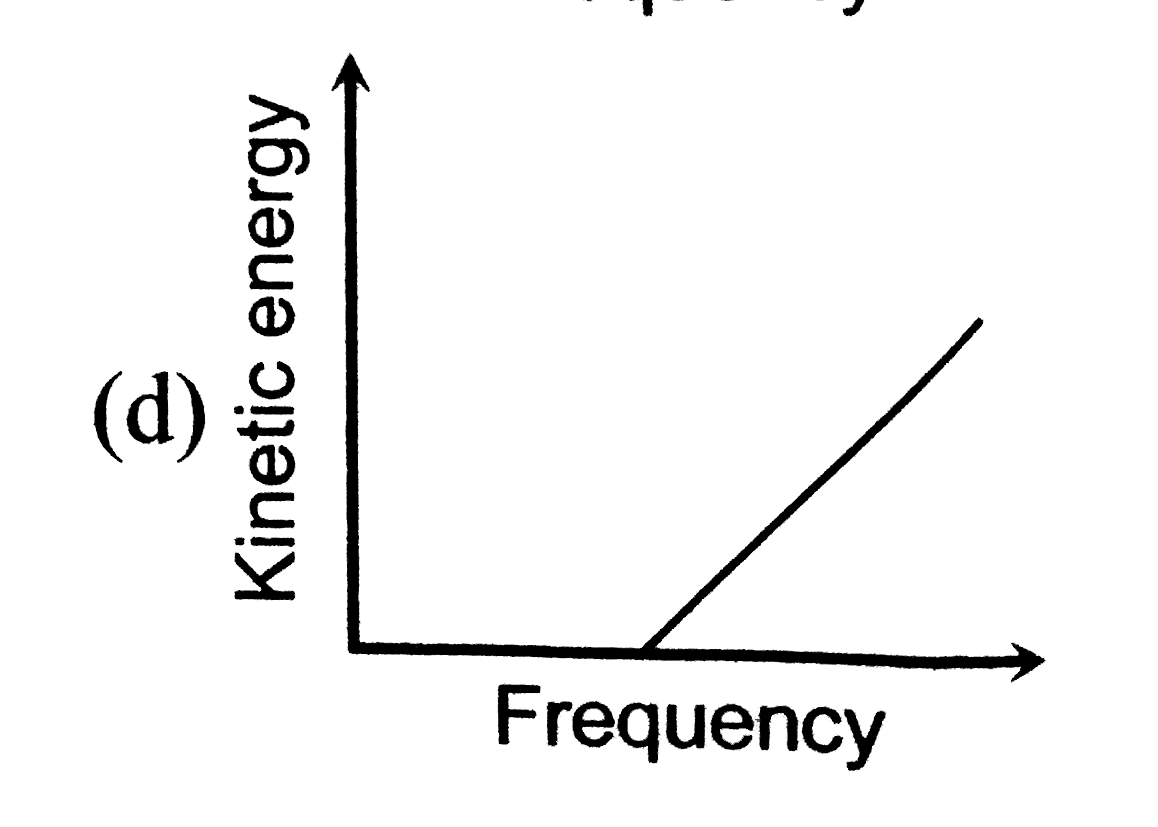How does kinetic energy of ejected photoelectrons depend upon the frequency of incident radiation?
For a given frequency of light , maximum kinetic energy of ejected electrons is independent of intensity of light used.
Topper's Solved these Questions
- BOOK - MODERN PUBLICATIONCHAPTER - DUAL NATURE OF RADIATION AND MATTER EXERCISE - Revision Exercises (Additional Questions)8videos
DUAL NATURE OF RADIATION AND MATTER
- BOOK - MODERN PUBLICATIONCHAPTER - DUAL NATURE OF RADIATION AND MATTER EXERCISE - Revision Exercises (Fill in the Blanks)11videos
DUAL NATURE OF RADIATION AND MATTER
- BOOK - MODERN PUBLICATIONCHAPTER - DUAL NATURE OF RADIATION AND MATTER EXERCISE - Higher Order Thinking Skills & Advanced Level (QUESTIONS WITH ANSWERS)8videos
DUAL NATURE OF RADIATION AND MATTER
- BOOK - MODERN PUBLICATIONCHAPTER - CURRENT ELECTRICITYEXERCISE - Chapter Practice Test15videos
CURRENT ELECTRICITY
- BOOK - MODERN PUBLICATIONCHAPTER - ELECTRIC CHARGES AND FIELDS EXERCISE - Chapter Practice Test15videos
ELECTRIC CHARGES AND FIELDS
Similar Questions
Knowledge Check
- Question 1 - Select One
The kinetic energy of the photoelectrons depends upon the
AIntensity of striking lightBNumber of photons strikingCFrequency of striking lightDNumber of photoelectrons ejected - Question 2 - Select One
According to Einstein's photoelectric equation, the graph between the kinetic energy of photoelectrons ejected and the frequency of incident radiation is
A B
B C
C D
D
- Question 3 - Select One
The kinetic energy of thephotoelectrons does not depends upon
AIntensity of incident radiationBFrequency of incident radiationCWavelengthof incident radiationDWave number of incident radiation
According to Einstein's photoelectric equation, the graph between kinetic energy of photoelectrons ejected and the frequency of the incident radiation is :
View SolutionMaximum kinetic energy of the photoelectrons is independent of the intensity of incident radiation .
Give reason.View SolutionExplain giving reasons for the following :
(a) Photoelectric current in a photocell increases with the increases in intensity of the incident radiation.
(b) The stopping potential (V0) varries linearly with the frequency (v) of the incident radiation for a given photosenstive surface with the stop remaining the same for different surfaces.
(c) Maximum kinetic energy of the photoelectrons is independent of the intensity of incident radiation.View SolutionThe maximum kinetic energy of the photoelectrons depends only on
View SolutionAssertion : If U.V radiations and infrared radiations fall on a metal plate, stopping potential would be grater for infrared radiations.
Reason : Maximum kinetic energy of photoelectrons is inversely proportional to the frequency of incident radiation.View Solution

